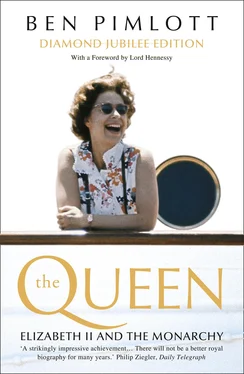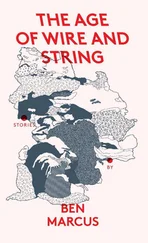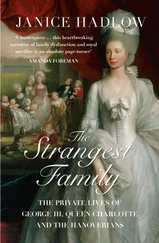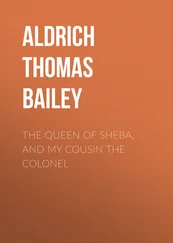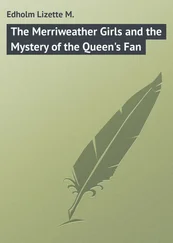The impression of Princess Elizabeth is of a strangely poised young person used to going her own way, which tended to be the way of her class rather than of her age group, and making few concessions to fashion. Yet the sense of her as highly conventional – in contrast to her sister – depends partly on the vantage-point and the generation of the observer. Simon Phipps, friendly with Margaret when he was a theological student and young clergyman, and who later became Bishop of Lincoln, remembers the stiffness of royal protocol, including having to change twice in the evening (once for tea, and again for dinner), and turning at table when the Monarch turned. But he also recalls happy games of charades, including an anarchic one in which he was cast as a bishop, and the King as his chaplain. 33When Lady Airlie, Queen Mary’s friend and lady-in-waiting, visited Sandringham in January 1946, what shocked her was the extent of change since before the war. She found youth in control, with jig-saw puzzles set out on a baize-covered table in the entrance hall. ‘The younger members of the party – the princesses, Lady Mary Cambridge, Mrs Gibbs and several young guardsmen congregated round them from morning to night,’ she noted. ‘The radio, worked by Princess Elizabeth, blared incessantly.’ No orders or medals were worn at dinner, as they had been in the old days, and the girls related to their parents with – to Lady Airlie – startling informality. Modernity was also visible ‘in the way both sisters teased, and were teased by, the young Guardsmen.’ 34
Teasing and teased Guards Officers were, however, only one aspect of their lives. The chasm that divided the King’s daughters from the young men and women they were able to meet socially, widened early in 1947 when they accompanied their parents on a major tour of southern Africa which attracted world attention, and set the stage for Princess Elizabeth’s début as a fully-fledged royal performer.
The end of the war had given a brief, almost paradoxical, boost to the imperial ideal. Partly, it was an effect of sheer survival – defending the Empire had been one of the causes for which the war had been fought. Britain’s near-bankruptcy had made the vision of a shared, transoceanic loyalty all the more necessary to national self-esteem: a necessity which the granting of self-government to India seemed, if anything, to increase. At the same time, the British Government was aware that the bonds that tied together the Commonwealth were in need of repair. Nowhere was this more apparent than in the case of Pretoria, capital of a Union still bitterly divided between English-speakers and Afrikaners.
Officially, the tour – which involved a total of four months’ travel – was supposed to be a chance for the King and Queen to rest after the ordeal of war. In practice, the schedule prepared for the Royal Family was strenuous, and the objectives highly political. Wheeler-Bennett later called it a ‘great imperial mission’ 35. That was one way of describing it. From the South African point of view, the visit was (in the words of another historian) ‘essentially a mission to save Smuts and the Crown of South Africa’. 36English-speakers were enthusiastic about it, Afrikaners on the other hand, were cynical – seeing George VI (according to the High Commissioner, in a telegram to the Palace) ‘as the symbol of the “Empire-bond” which they had pledged themselves to break.’ General Smuts was accused of having arranged the trip in order to rally the English section round him for the coming general election. 37But there was also something else, which in one sense made nationalist Boers right to be suspicious: the royal trip had an ‘imperial’ aspect that went beyond the attempt to improve relations with the Union. South Africa was important in a new ‘multi-cultural’ definition of the Commonwealth – in the light of Indian independence – because it was the only ‘white’ dominion that was in reality predominantly black. The royal visit was to be a way of showing Windsor and Westminster interest in what one (pro-British) Natal paper described as ‘the complex problems of race relationships – problems which are certain to assume an increasing importance in the years ahead,’ in the many countries which owed allegiance to the Crown. 38
These factors, however, were not the ones that got the most publicity. In the eyes of the world, the tour also had a personal and dynastic interest: Princess Elizabeth and Prince Philip would be apart for four months. Since the invitation was accepted by the King on behalf of the whole Royal Family in the first half of 1946, the trip could hardly be seen as an attempt to break up the friendship. Yet the visit took place as speculation was at its height; and the irony did not escape the gossip-writers that the first major tour on which the King and Queen proposed to take their elder daughter was also one on which she had reason to be reluctant to accompany them.
Why was there no engagement announcement before they set out? A belief that all was not going smoothly added to the press excitement. One former courtier suggests that – whatever the original intention – the King and Queen saw the visit as an opportunity for reflection. ‘Undoubtedly there was hesitation on the part of her parents,’ he says. ‘They weren’t saying “You must or mustn’t marry Prince Philip,” but rather, “Do you think you should marry him?” It wasn’t forced. The King and Queen basically said: “Come with us to South Africa and then decide”.’ 39
With Philip’s naturalization due to be gazetted in a few weeks, however, any pretence that the relationship did not exist was abandoned. A couple of nights before the departure of the Royal Family, Elizabeth accompanied both her parents to dinner with the Mountbattens, including the about-to-be Philip Mountbatten, at 16 Chester Street – serenaded by Noël Coward. ‘The royal engagement was clearly in the air that night,’ recalled John Dean, Mountbatten’s butler and later valet to Philip. 40It was a farewell meal in two senses. While the King prepared to inspect one of his domains, Uncle Dickie was about to negotiate the transfer of power, as George VI’s Viceroy of India, in another.
MUCH OF THE journey to Cape Town, aboard the battleship HMS Vanguard , was uncomfortably rough, confining the Royal Family to their cabins. When she returned to South Africa as Queen several decades later, Elizabeth recounted how sea-sick they had been. However, as they travelled south they left Europe’s worst winter weather of the century behind them. ‘Our party seems to be enjoying themselves, especially the princesses,’ Lascelles wrote to his wife, describing ‘crossing the line’ festivities, and a treasure hunt involving the King’s daughters and the midshipmen. ‘Peter T[ownsend],’ he added, referring to an equerry who was a member of the party, ‘tries hard and is doing well.’ 41
For the two young women, the experience was breathtaking – not least because it was the first time either of them had been abroad. In the 1930s, they had been considered too young to accompany their parents on foreign visits, and during the war it had been too dangerous, or impracticable, to do so. Thus, Princess Elizabeth had reached the age of twenty before setting foot outside the United Kingdom. The impact of the voyage and then of the journey around a very different kind of country was therefore all the greater. South Africa – with its varieties of terrain, race, wealth and culture – was a powerful reminder to Elizabeth of the Commonwealth duties that lay ahead. Both girls were struck by the open spaces: Princess Margaret recalls her sense of the vastness of the country and the contrasts with austerity Britain. ‘There was an amazing opulence, and a great deal to eat,’ she says. She remembers the change from a country still restricted by food rationing, and her delight at the endless series of meals with their abundance of delicacies, including an enticing array of complicated Dutch pastries. Huge fir cones seemed to symbolize the outsize scale of everything they encountered. The South Africans lent them horses, and they rode on the beaches, wearing double felt hats. 42
Читать дальше
